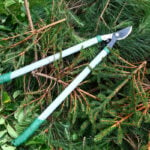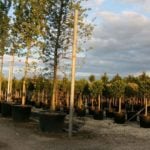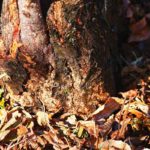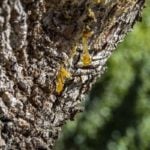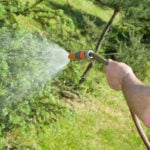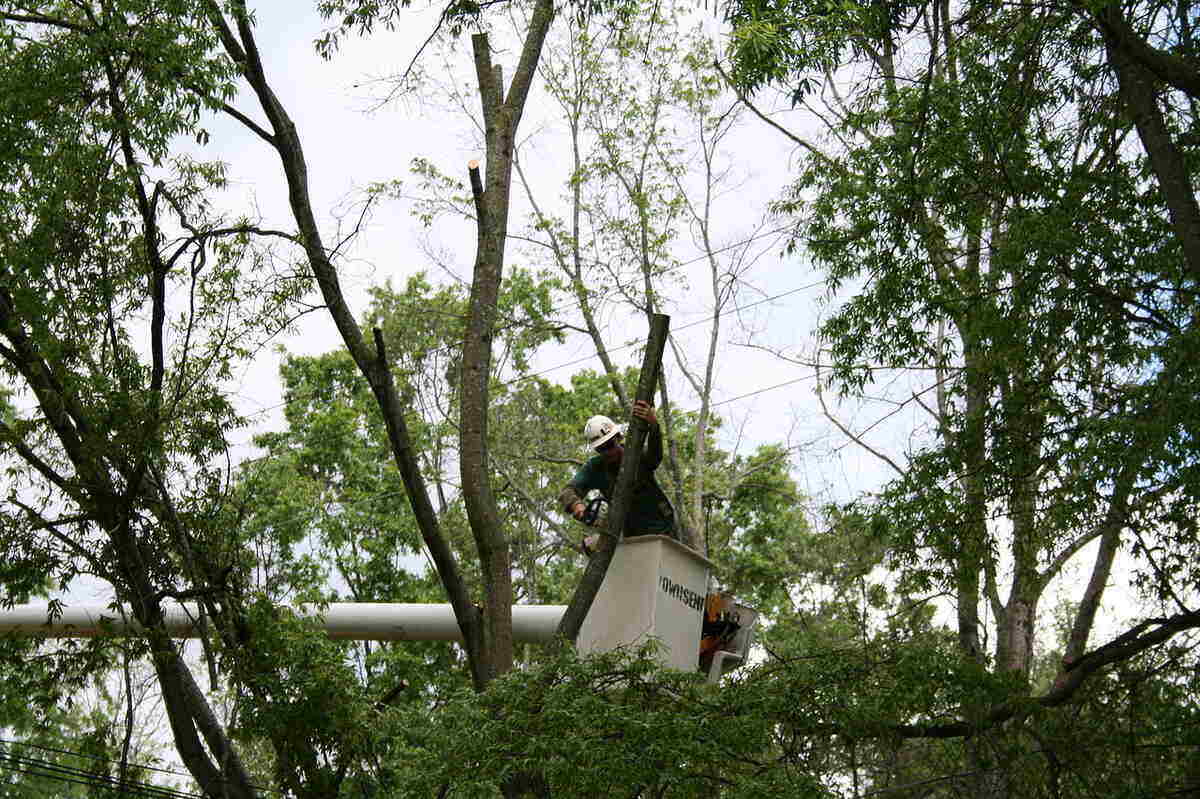
When is the best time to trim trees? Many believe it is as soon as the bright leaves begin falling, but that assumption could damage your trees. Arborists agree the best time to prune a tree is typically in the winter after the tree has gone dormant. However, it isn’t always that simple. We’ll show you why your tree’s age, type, and location can affect the best time to prune trees.
When to Prune Trees
The winter months are the ideal time, approximately November through March, which are the dormant months for trees and most plants. With a few exceptions, these colder months are generally the best time to trim a tree. Here are the reasons why winter pruning is regarded as the best practice:
- There is better visibility when pruning during the dormant season due to the lack of leaves.
- Proper wound closure heightens in late winter before a spring growth spurt. Wound closure is crucial to successful tree pruning because it prevents the spread of decay in the tree.
- Pests and pathogens are less likely to enter trees.
If you’re ready to give pruning a try, here is the best time of the year to prune trees according to different tree types.
Deciduous Trees
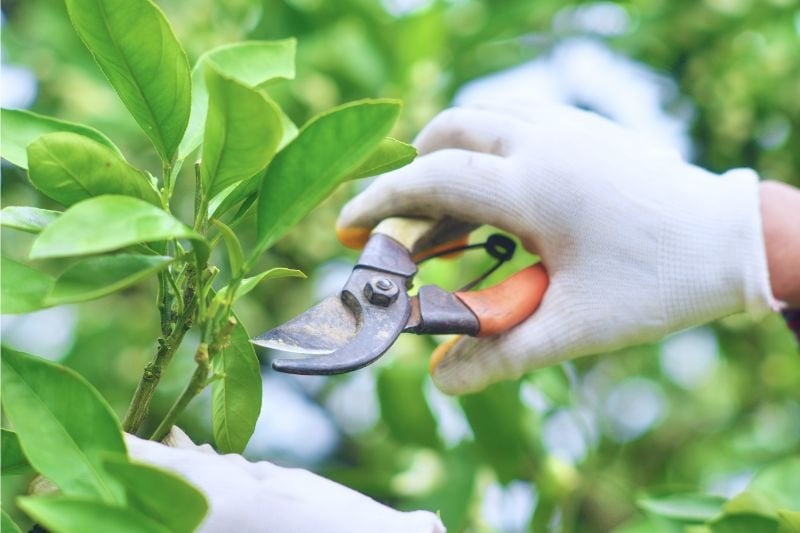
Deciduous shed their leaves each year. Late fall to winter is when you should trim trees of this kind, according to the University of Wisconsin-Madison Division of Extension.
Why you should prune deciduous trees from late fall to winter:
- The trees are in their dormant season.
- Easy to see the framework of the branches.
- Diseases and insects will be gone.
- Avoids “bleeding” — some trees “bleed” (the sap flowing out of trees) in spring if pruned in the late winter. Bleeding does not damage the tree.
Young Trees
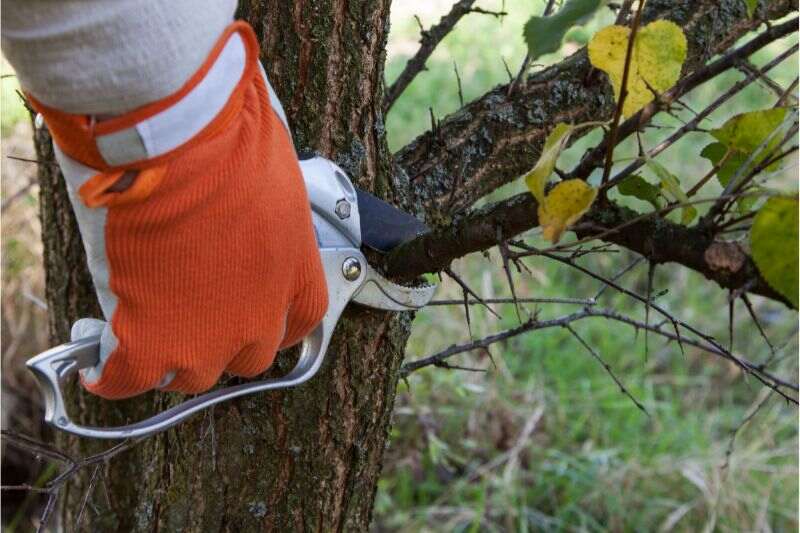
Generally, young trees don’t need to be pruned immediately after they are first transplanted. So when should you prune trees after they are planted? It’s better to wait a year, and then prune as the tree grows:
- Remove broken or damaged branches. This is the first and only thing that should be done in the first year.
- Leave the temporary low branches. These branches should be short enough that they don’t compete with permanent branches but low enough to protect the young trunk. Prune these off gradually as the tree grows.
From that point, you can develop a solid and well-shaped tree by training the tree naturally and shaping it as it continues to grow. If you’re unsure, remember that you can always ask a local professional what time of year to trim trees that are young, as it may vary by the type of tree and area of the country.
New Trees
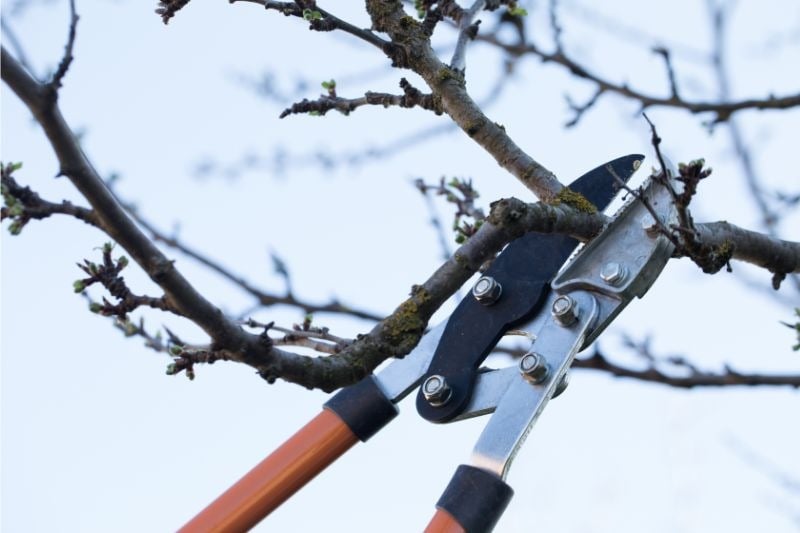
Whether they are young or more mature trees, recently planted trees are a special case. While it might be tempting to get the pruners out immediately for your newly planted tree, as with young trees, it’s usually better to wait a year.
Pruning before the root system has had a chance to develop and strengthen can reduce the tree’s ability to manufacture food. Additionally, it can slow the overall growth of the tree. Inspect the tree before you make any cuts. Typically, newly planted trees only require corrective pruning. Corrective pruning involves removing:
- Double leaders (two competing lead branches)
- Dead branches
- Crossing branches
- Broken branches
Like young trees, maintain the lower branches to protect the tree and provide it with nutrition in the first few years. If you’re wondering whether or not you should be fertilizing, test your soil. Your soil nutrition and pH levels will tell you if your tree needs added nutrition from fertilizers.
After the first few years, you can gradually remove these lower limbs over the next five to 10 years as the tree becomes more stable. For more information on when your tree may need pruning, check out our article “Signs Your Trees Need Pruning.”
Subtropical Trees
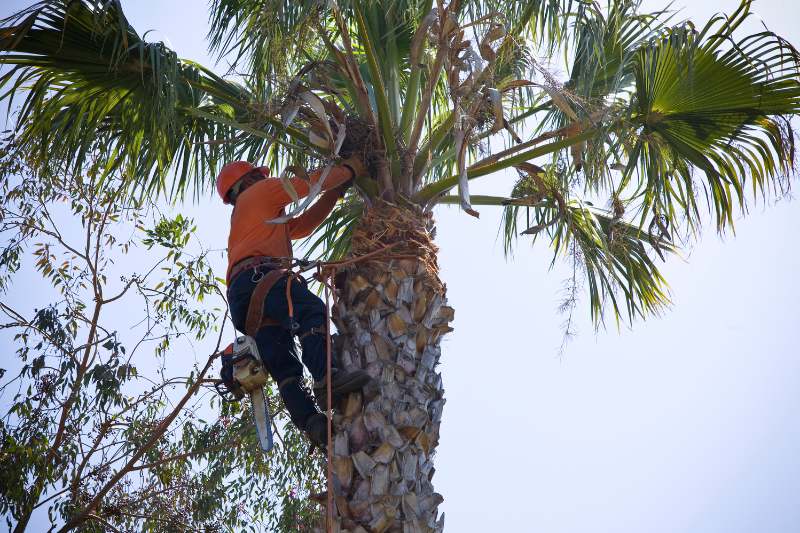
The best time to trim trees in California and other subtropical areas, like Florida, is all year round. Because of the growing environment, they are replacing lost tissue constantly and have plentiful sources of sunshine and water 12 months a year, says Tchukki Andersen, staff arborist for the Tree Care Industry Association (TCIA) in Manchester, N.H.
The industry standard is never to make pruning cuts that remove more than 30 percent of live tissue from a tree in any season. “If you have a giant broken branch and 30 percent of the leaves are on that branch, you are done for the season.”
Flowering Trees
The best time to prune flowering trees depends on what time of year they bloom. As a general rule, prune spring-blooming trees immediately after they flower. Prune trees that bloom in the summer or fall in late winter or early spring before the end of their dormancy.
Routine pruning of dead or dying branches can be done at any time. However, your type of tree might have specific needs and rules for trimming.
Some specifics for flowering trees:
- Late spring to early summer: Prune trees that develop flowers on old wood immediately after the flowers have faded. Ex. Flowering cherries, crabapple, dogwood, saucer magnolias
- Late winter into early spring: Prune late-blooming trees that bloom in the summer or fall during this time. Ex. crape myrtles, American holly, smoke tree
Fruit Trees
Fruit trees, like many others, should be pruned in the late winter to early spring. There is also the option of pruning in late July or August. However, severe pruning during this time can be harmful to the tree because it weakens it. This is why most pruning should begin closer to the beginning of spring.
Pruning fruit trees allows for an open canopy rather than a cluttered and overwhelmed canopy of branches that block sunlight from the rest of the tree. A fruit tree that has been pruned and gets enough sun produces healthier and larger fruits.
Specific resources for particular fruits:
- “Growing Fruit: Training and Pruning Young Apple and Pear Trees” by University of New Hampshire
- “Pruning Citrus” by University of Arizona
- “Training and Pruning Peach and Cherry Trees” by University of Maryland
Note: Pruning during early winter can lessen the tree’s winter hardiness, allowing room for disease if severe cold temperatures meet the exposed stumps. Late winter is usually the best option, as it will take around two weeks for a tree to become winter-hardy again after pruning.
When Not to Prune
Generally, pruning in late summer and early fall is the worst time to prune most trees. Anderson explains: “The fall is not the time to learn how to prune. Trees are preparing for dormancy then, and it’s taking all the good stuff out of its leaves to store.”
You don’t want to prune at this time because pruning often encourages new growth, and that can prevent the tree from entering its natural dormancy. Pruning trees in the fall will cause them to struggle to heal in time for the cold season, which may lead to disease and decay within your tree.
Exception: Trimming trees in the fall works for deciduous types. Deciduous trees should be pruned in the late fall or early winter. This is at the start of the trees’ dormancy and helps prevent bleeding in the spring.
Experts Break the Rules
Andersen stresses that qualified tree care specialists prune trees every day, year-round without a lot of detrimental effects. “However, tree service professionals know more on how to care for the health of a tree,” she states. “They understand its stages and processes such as dormancy and new growth.”
Andersen adds that many homeowners really don’t know what kind of trees are on their property until a crisis happens. Learning about those trees and their needs for staying healthy can add value to homes and add shade and beautification to the landscape.
“The hard part for people to understand is that we have to prune at the pace the tree wants us to. You can’t make it look good just in one season,” Andersen says. If you’re unsure what types of trees you have or when your trees should be pruned, Andersen recommends getting an assessment from tree trimming professionals or an arborist before doing anything.
Why Prune?
But why is it important to prune trees in the first place? Because pruning:
- Prevents damage: Prune infested, weak, dead, or diseased branches at any time during the year. Homeowners remove dead branches to make the tree look better. In addition, dead, damaged, or diseased branches are hazardous to people and property, especially during a thunderstorm or inclement weather.
- Shapes the tree: Shaping trees enhances the form and strength of the tree. It will also enhance light diffusion and airflow to the tree’s crown or someone’s home or landscape.
- Removes spent flowers: Small flowering trees or large flowering shrubs often benefit from deadheading — removing faded flowers after they bloom.
- Promotes fruiting: Fruiting trees should be pruned to maximize the health of the tree and encourage fruiting.
Do take precautions when pruning your trees. The wounds from pruning can spread diseases and change the way a tree grows. Oak trees, for example, can suffer from oak wilt, so it’s a good idea to use a pruning sealer after you prune an oak tree. Andersen notes that no branch should be cut without a clear reason. Strive for clean branch collar cuts when pruning.
Get Expert Advice
Good tree care starts with taking a tree inventory. If you don’t know what kind of trees are growing in your yard or whether or not they need trimming, then there are two things you can do to find out.
- Andersen suggests contacting your local Cooperative Extension Service to get free advice. Some have a certified arborist or horticulturist on staff. They offer their expertise for the area in which you live, whether in the country or a big city.
You can find the one closest to you by clicking on the Land-Grant University Website Directory and going to your state. Once you locate your state, click on it, and there usually will be a tab to Locate Your Local County Extension Office. Their websites are robust, Andersen says, with information about trees, too.
- Or you can find a qualified tree care company to do an assessment. You can ask them about the health of your trees, which ones might fall on your house in a storm, and any other pending disasters, she says. To find a certified arborist, you can go to the International Society of Arboriculture’s (ISA) TreesAreGood.org, a website helping the public with tree-care information.
FAQ About Pruning Trees
When Should You Not Cut Tree Branches?
As a general rule for deciduous trees, you should not cut tree branches from spring to early fall. Cutting tree branches in summer and early fall (during the growing season) can be particularly damaging because it stimulates new growth in the tree. Having new growth right before the tree enters its natural dormancy can cause decay, disease, and premature death.
However, as with most rules, there are exceptions for when to cut tree branches:
• Flowering trees that bloom in early spring should be pruned in the late spring/early summer. Because they grow new buds in the summer, prune before this point to avoid cutting off the new growth.
• Subtropical trees are also an exception to this rule. Since these trees have an abundance of sun and less cold, harsh weather conditions, you can trim these trees year-round.
Can You Trim Trees in the Summer?
Generally, pruning trees in the summer is not recommended. During the summer months, most trees are still very active and growing. Trimming during this time could discourage new growth for the next season.
Ideally, the season when you should prune trees is winter, when the tree is dormant. Since the tree is inactive, it will better protect it and encourage spring growth.
There are times when summer pruning is acceptable.
• Certain branches are cause for concern: If there is potential that a branch might fall and cause damage to your property, especially if it’s dead, diseased, or damaged.
• Flowering trees that bloom in the spring: These should be pruned in the late spring to early summer.
• Subtropical trees in sunny, warm climates: Trees like these can be trimmed year-round, including in summer.
Can You Trim Trees Yourself?
Yes, you can prune small and young trees yourself to shape or keep them healthy. If you want to trim trees that are large and require heavy machinery or a ladder to reach, it is always better to call a licensed tree trimmer for assistance or to estimate tree trimming costs for your project.
If you do want to trim your smaller trees, here’s a guide to get you started:
• Use hand shears, a hand saw, and loppers, which are a type of long hand pruners.
• Cut any dead, decaying, or diseased branches off at the nearest healthy branch to prevent infestations from spreading.
• Trim any rubbing branches or branches growing inward.
• Take off most of the “suckers” (the new growth shooting up from the ground).
• Prune any expended flower buds on flowering trees. Take these off at the nearest group of leaves or side stems.
Note: Each type of tree is different and has its own set of pruning standards, including when it is time to prune the tree and what to cut off at any given time. Know your tree before taking the first cut.
Is it Bad to Trim All the Branches Off a Tree?
Yes. Although cutting dead branches improves tree growth, if you remove too many of the lower branches, you can end up with a weak tree.
When to Call in The Pros
Keeping track of all your plants, when to prune the shrubs, when to deadhead the flowers, and when to trim the trees can be overwhelming on a to-do list. Don’t make yourself dizzy by juggling which seasons are best to prune which trees. Leave the when and the where to the pros by calling a local landscape professional.
Main Image Credit: Ildar Sagdejev / Wikimedia Commons / CC BY-SA 3.0
